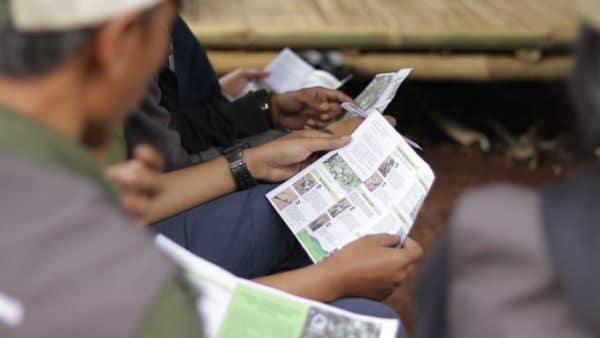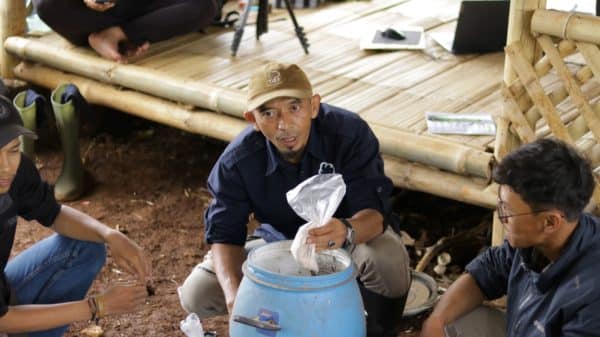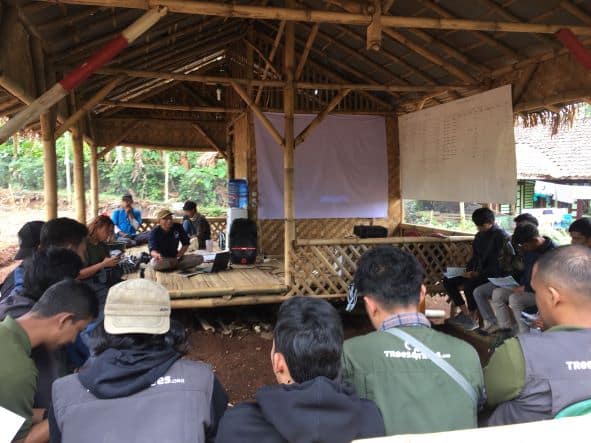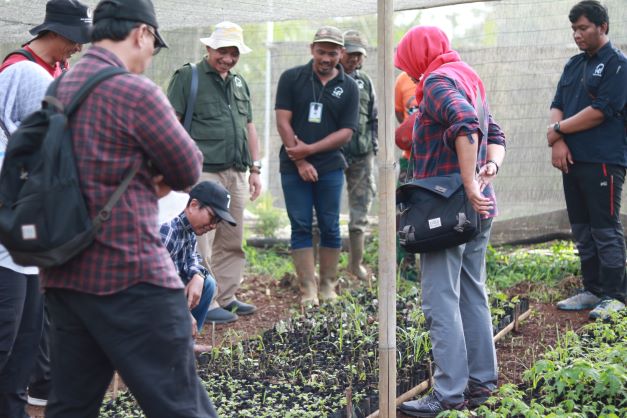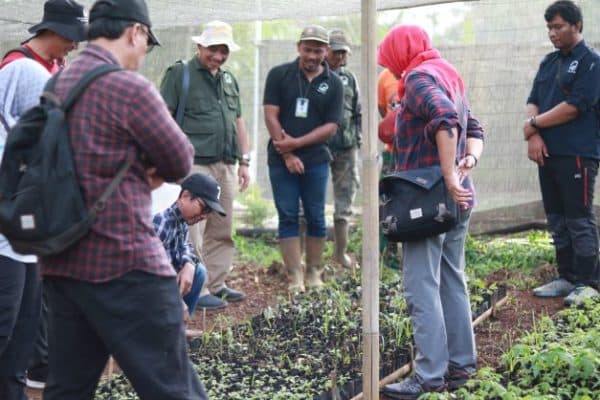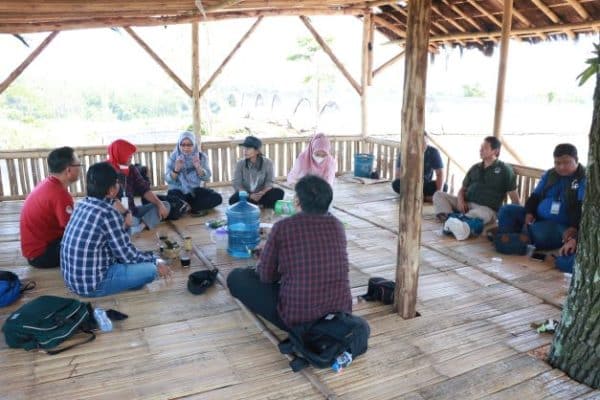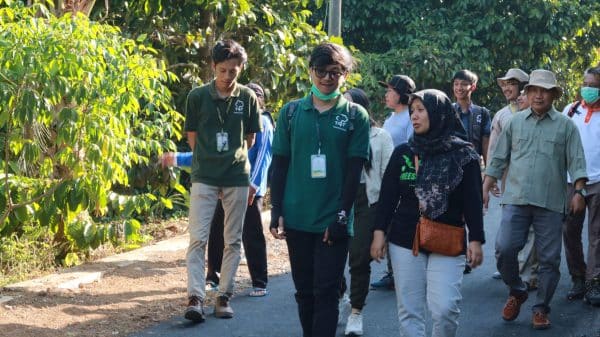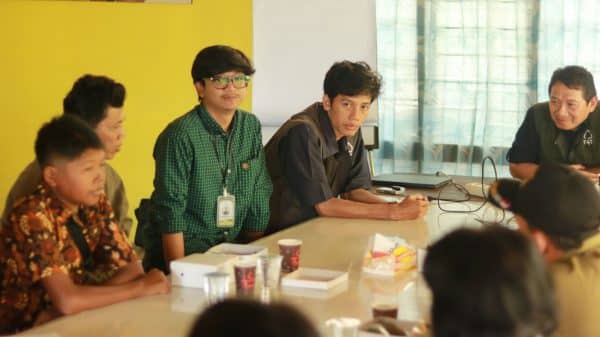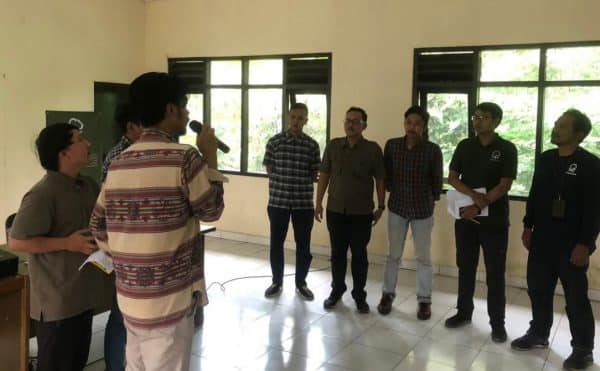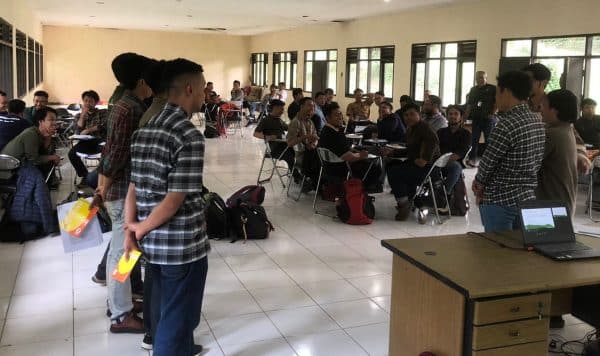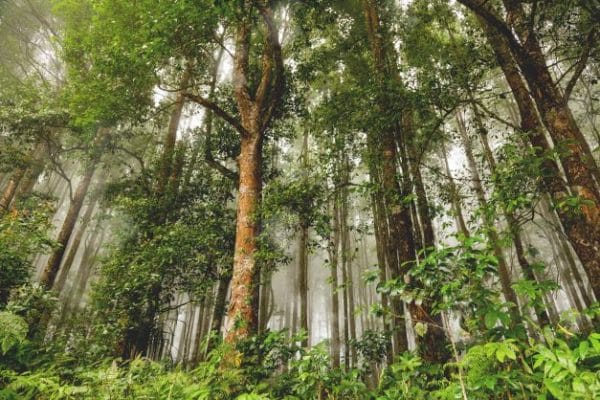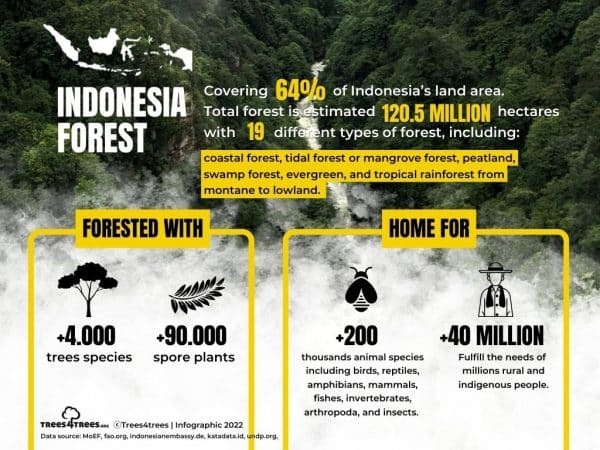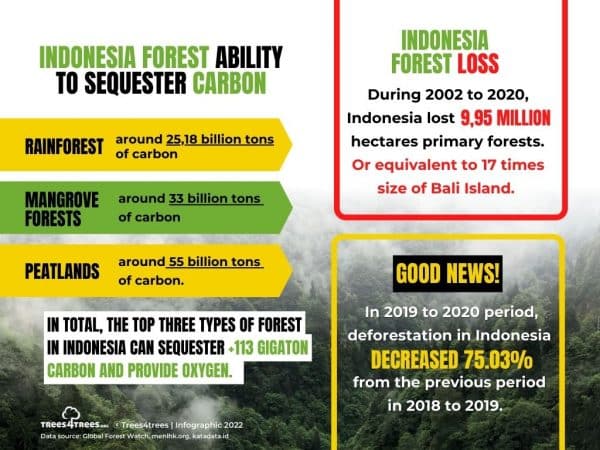Planting Trees to Improve Farmers’ Livelihood in Kenteng Village

Planting trees is important because most of the villagers in Kenteng Village, Central Java, work as farmers. They grow food crops such as corn, cassava, and rhizomes such as ginger and turmeric to meet their daily needs. However, the selling price of food crops is not competitive in the market. One kilogram of cassava, for example, is sold at a price of about 1,500 rupiahs (around US$0.10).
This condition forces farmers to do side jobs to fulfill their needs. Besides farming, most farmers also raise goats to support their families. Recently, many farmers even also make woven crafts from pandan leaves as their side job because the produce from farming is not enough to make a living.
The villagers are hoping that they can plant trees that can improve their livelihood and rehabilitate their environment at the same time.

Planting tree to rehabilitate the environment
The soil structure in the village is prone to landslides. But when the dry season comes, drought and clean water shortages threatened this village. In response to this, Faris, Kebumen Trees4Trees Unit Manager is conducting a tree-planting program in Kenteng Village in the 2022 planting season which starts in November.
Faris revealed that the large number of critically degraded lands and environmental problems that exist in this village were the main motivations to do the tree-planting program in this area.
“Trees4Trees is supporting the village by planting trees in an area of approximately 10 hectares. We intend to plant teak around the village because of the dry soil characteristic. It is most suitable for teak because it doesn’t need a lot of water to grow. Besides, there are also quite a lot of teak trees successfully grown in this area,” said Faris.
Read also: Preventing Clean Water Shortages and Landslides in Kenteng Village
Improving the livelihood through planting trees
The condition of the soil in the village, which is seasonally arid and prone to landslides and drought, makes the life of the people in the village even more difficult. Once these conditions occur, they will disrupt the activity in the village. Farmers must stop their farming activities because collecting water has become the most urgent thing to do.
Ginardi, the secretary of Kenteng Village revealed that villagers’ biggest hope is they can plant trees that are more valuable than the food crops they are currently growing and can help their environment.
“We are hoping to be able to plant trees that can maintain the water availability and prevent landslides as well as increase the income of villagers. So, the result of the trees can improve the livelihood of villagers. The result of fruits or other valuable trees like petai or jengkol certainly will greatly benefit the villagers,” Ginardi said.
Planting fodder trees which fertilize the dry soil
Apart from relying on agricultural produce, villagers also depend on goats as livestock for their livelihood. Unfortunately, they often have difficulties finding fodder. When the dry season comes, they have to go farther to find it.

“Most of the farmers here raise goats as their investment. Currently, they feed their livestock with cassava leaves. But it is still not enough. They have to go some distance away to find more grasses and leaves for their livestock. It takes so much time. So, if we plant trees that are also can be used as animal feed, it will certainly help the villagers,” said Rokhimin, the farmer community leader of Kenteng Village.
He said that most of the villagers are now interested to plant trees that also can be used as animal feed. Considering the needs of villagers, Faris said that Trees4Trees will plant kaliandra and indigofera trees in Kenteng village beside teak and fruit tree. He said that both trees are also qualified for environmental improvement.
“Both are not only beneficial as fodder but also improve soil fertility. The village has much barren and fallow land. By planting kaliandra and indigofera, their fallen leaves can amend the topsoil and will increase soil fertility,” he said.
To help the villagers to plant trees in the village, Trees4Trees is inviting you to take part in #GivingTuesdayForTree campaign and DONATING TREES for Kenteng village until November 29, 2022. You can donate trees through GIVING TUESDAY



